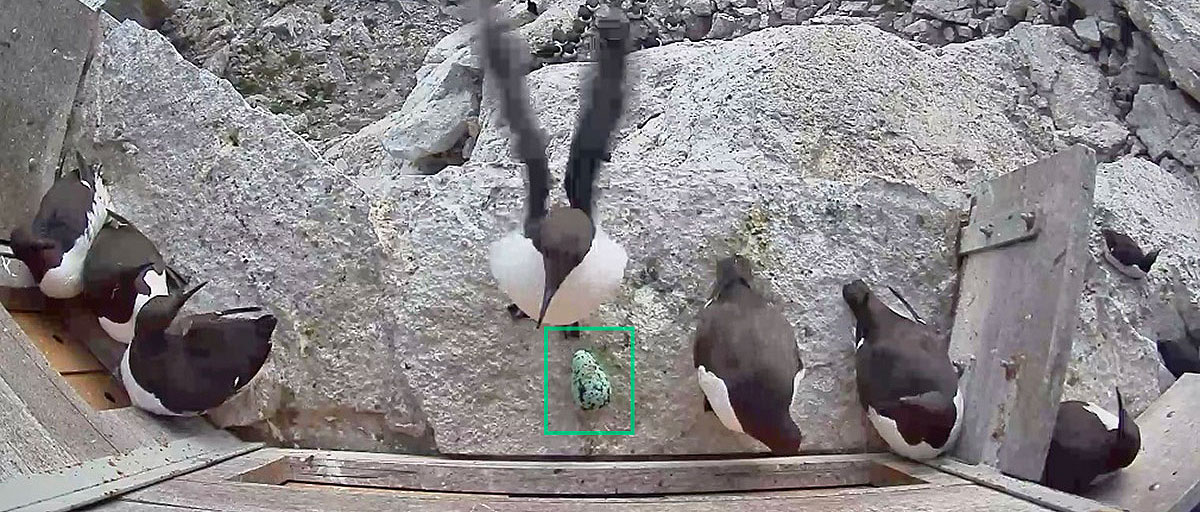
Between 21-22 November 2019, a two-day hackathon will be held in Gothenburg, Sweden with the aim of accelerating the research on guillemots and the sensitive ecosystems of the Baltic Sea.
Bildtext får vara max två rader text. Hela texten ska högerjusteras om den bara ska innehålla fotobyline! Photo: B. Christensen/Azote
HACKATHON
Accelerating research through artificial intelligence
Data scientists, programmers, and UX designers team up with sustainability researchers and practitioners to find new ways to structure data on the Baltic Sea
Text
Guillemots return to the same ledge on the Swedish island Stora Karlsö every spring to lay eggs and raise their chicks. In 2019, they were filmed and the extensive material holds plenty of interesting insights. But how do you structure 2000 hours of filmed material?
Between 21-22 November 2019, a two-day hackathon will be held in Gothenburg, Sweden with the aim of accelerating the research on guillemots and the sensitive ecosystems of the Baltic Sea. Data scientists, programmers, and UX designers will team up with WWF, the Swedish University of Agriculture (SLU), Stockholm Resilience Centre, the Baltic Seabird Project, and AI Innovation of Sweden, to work out ways to structure data on the seabirds.
Last year, WWF and SLU invited the public to watch and comment during a live TV coverage of the birds' activities on Stora Karlsö. The broadcast on WWF's website was a success, resulting in 1300+ comments and helped the researchers make great leaps forward in analyzing the guillemots' lives.
"The public's great interest and efforts in previous projects have spurred us to continue to drive the development of the citizen research initiative and to allocate additional resources to, for example, hackathon and platform development," says marine expert Metta Wiese at WWF.
A ‘litmus test’ of a sensitive ecosystem
By studying seabirds this way, researchers have gained new insights into their life patterns, an important key in working to recreate resilient seas.
"We know that the herring these birds catch around the colony to feed the chicks are vital to them. Finding out more about how long they need to be away to find a fish and if some individuals are better than others at finding them, is interesting not just from a biological point of view, but also important information when it comes to studying how the seabirds on an individual level respond to ecosystem changes such as the amount of fish in the Baltic Sea, says former centre PhD student, now and marine researcher at SLU, Jonas Hentati-Sundberg.
For Wiese and Hentati-Sundberg, the hackathon will be a unique opportunity to collaborate cross-sectorally to save the seas. Using AI, researchers hope that the mapping of individuals and common events can be automated, freeing up more time for better analyses of the data.
"Being able to identify individuals and events such as mating, brawl, feeding, arrivals and departures, gives the researchers the necessary tools to get an in-depth understanding of the lives of the guillemots. Watching thousands of hours of film is impossible – but with automation, we hope to get a broader picture of everything happening on the ledge. If we then have knowledge of how the birds are moving, perhaps machine learning can be used to identify what they are doing and maybe who is doing it," says Hentati-Sundberg.
Click here to read more and sign up to the hackathon 21-22 November.






